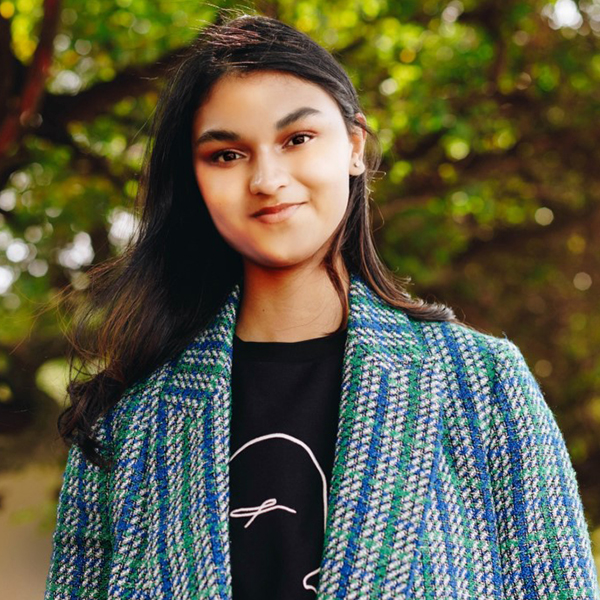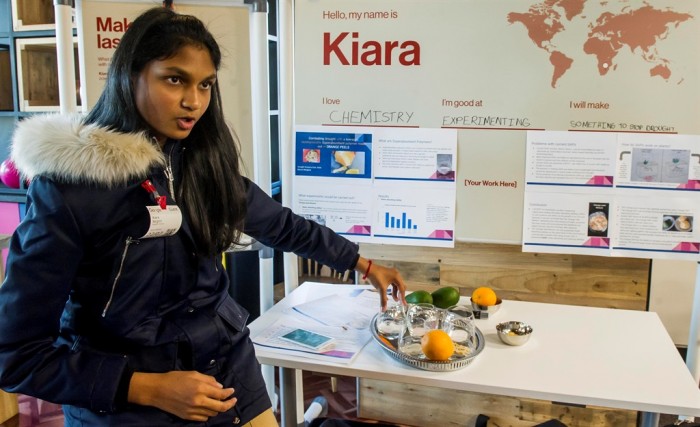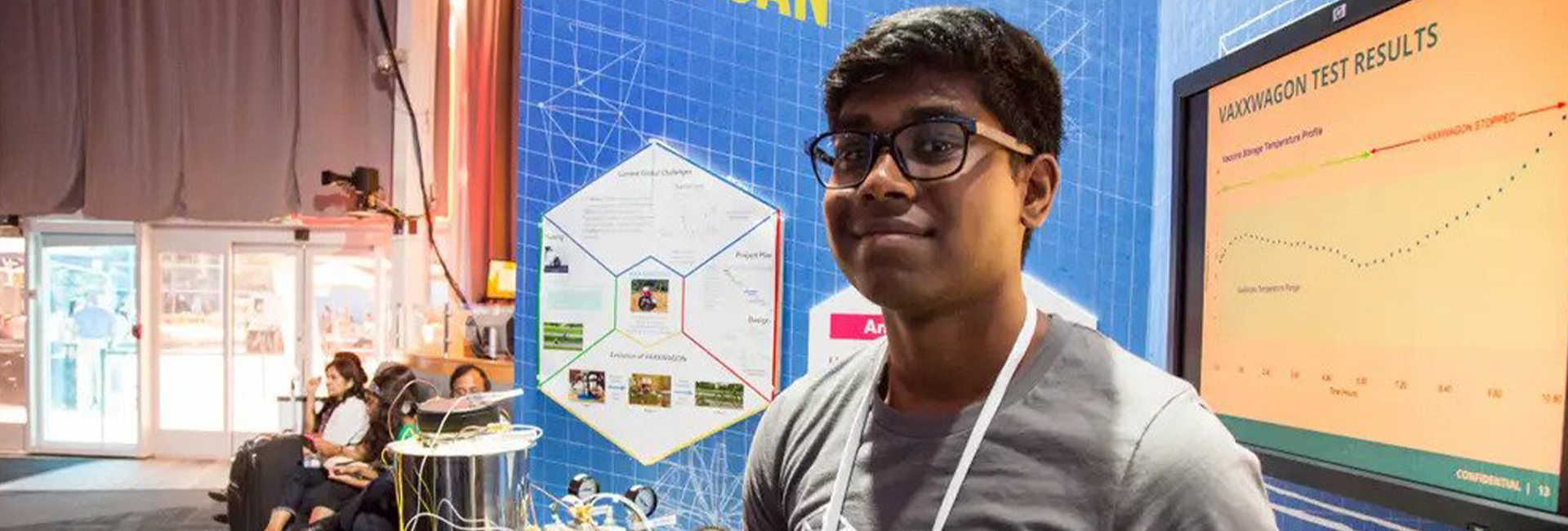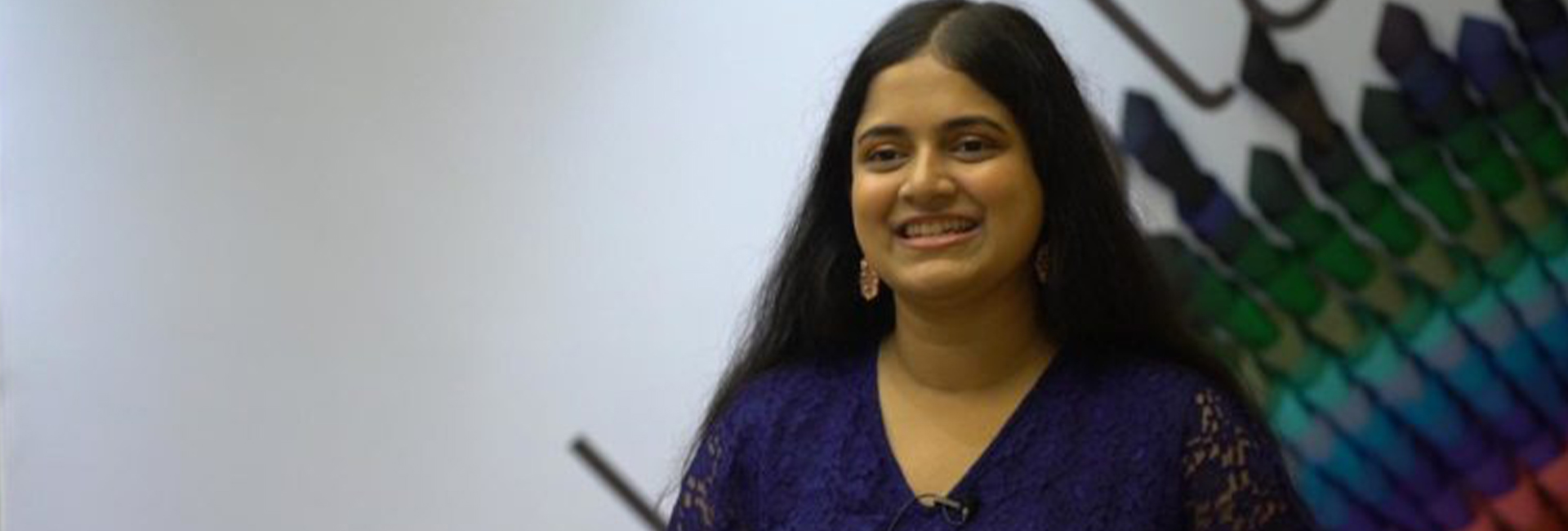(July 5, 2023) At the age of 13, Indian-origin South African Kiara Nirghin found herself confined to a hospital bed for over a year due to droughts as she was diagnosed with Bilharzia, a parasite-induced disease and a few months later with bacterial meningitis, inflammation of the membranes surrounding brain and spinal cord. It was also the onset of one of the worst droughts in South Africa, and unable to attend school, Kiara spent hours writhing in pain. “I remember lying in the hospital bed and thinking to myself if this is the immense pain that my mind can endure, just imagine the possibilities if this powerful machine is used for something more productive,” she said on her TEDxPretoria talk. Those months in the hospital were spent not only on self-reflection but also understanding the power of knowledge and putting it to use to find solution for bigger world problems. This powerful through process and months of experimentation led to the solution to the problem of drought by developing a cost-effective “super-absorbent polymer” that helps soil retain water. The invention won the Stanford graduate the 2016 Google Science Fair, and also got her a place on Times 30 Most Influential Teens list.

Kiara Nirghin
Growing up in the town of Alberton with her three other siblings, Kiara was always interested in science, especially chemistry. As young as seven, she would experiment with vinegar and baking soda solutions in plastic cups in her kitchen. “My natural curiosity and questioning nature have sparked my everlasting love of science,” she said in an interview.
She was keen to look for potential solution to problems, and one such issue that she couldn’t turn a blind eye to was drought. South Africa was experiencing a severe drought, and it was agricultural areas that were massively hit, leading to a decrease in agricultural production and a rise in food prices, affecting both farmers and consumers. Seeing the worrisome situation, Kiara took it upon herself to find a plausible solution. Despite much effort, she did come across many stumbling blocks initially until she saw her older sister change her baby daughter’s diapers. “I was surprised how much liquid a low-cost diaper could absorb. These are what called superabsorbent polymers which are essentially powders which can retain large amount of water relative to their weight. And if applied to the soil of a plant, when rain does fall, create a reservoir of water and through a period of droughts would allow the plants to sustain its life,” she added.


Kiara Nirghin
Upon research, she found that such solutions were already applied to the agricultural industry, however, they were non-bio degradable, chemical-based and expensive. “We had a possible solution that was not solving the problem. So, I decided to emulate a commercial SAP but make it biodegradable and make it low-cost, ultimately looking at my solution to the problem,” said United Nations Young Champions of the Earth who came up with a superabsorbent polymer made from waste products like orange peels and avocado skin. Her invention increases the chance for plants to sustain growth by 84 percent during a drought and can increase food security by 73 percent in disaster-struck areas.
In 2021, she partnered with an international agricultural firm, to bring her product to market that’s set to revolutionise water conservation and sustain crops through periods of drought, thus increasing food security across the globe. “I like to think of the issues of the world as problems that have not yet been partnered with a solution,” she added.
A champion of girls in STEM, Kiara believes in crucial representation in fostering a positive environment in STEM. “I always get asked why girls should get involved in science and technology? And I always answer the question by saying, ‘Why should they not?’ Suppose we’re trying to find a solution to curing cancer, and you bar women from science fields. In that case, you’re already decreasing the ability to find that solution by 50 percent because fewer people are thinking about it,” she told Mission.
The 23-year-old took up Computer Science in Stanford University “to understand how we can leverage artificial intelligence technology and bio computation to solve large-scale problems.” This led her to co-found Chima in 2022 to power scalable generative AI for the world’s most important institutions. Over the years, Kiara has moved towards inventions and work that provide solutions. “For me, it started on that hospital bed when I realised I have a machine in my brain just as powerful as my favourite scientist and if they can use it to do amazing things, so can I.”
- Follow Kiara Nirghin on LinkedIn




